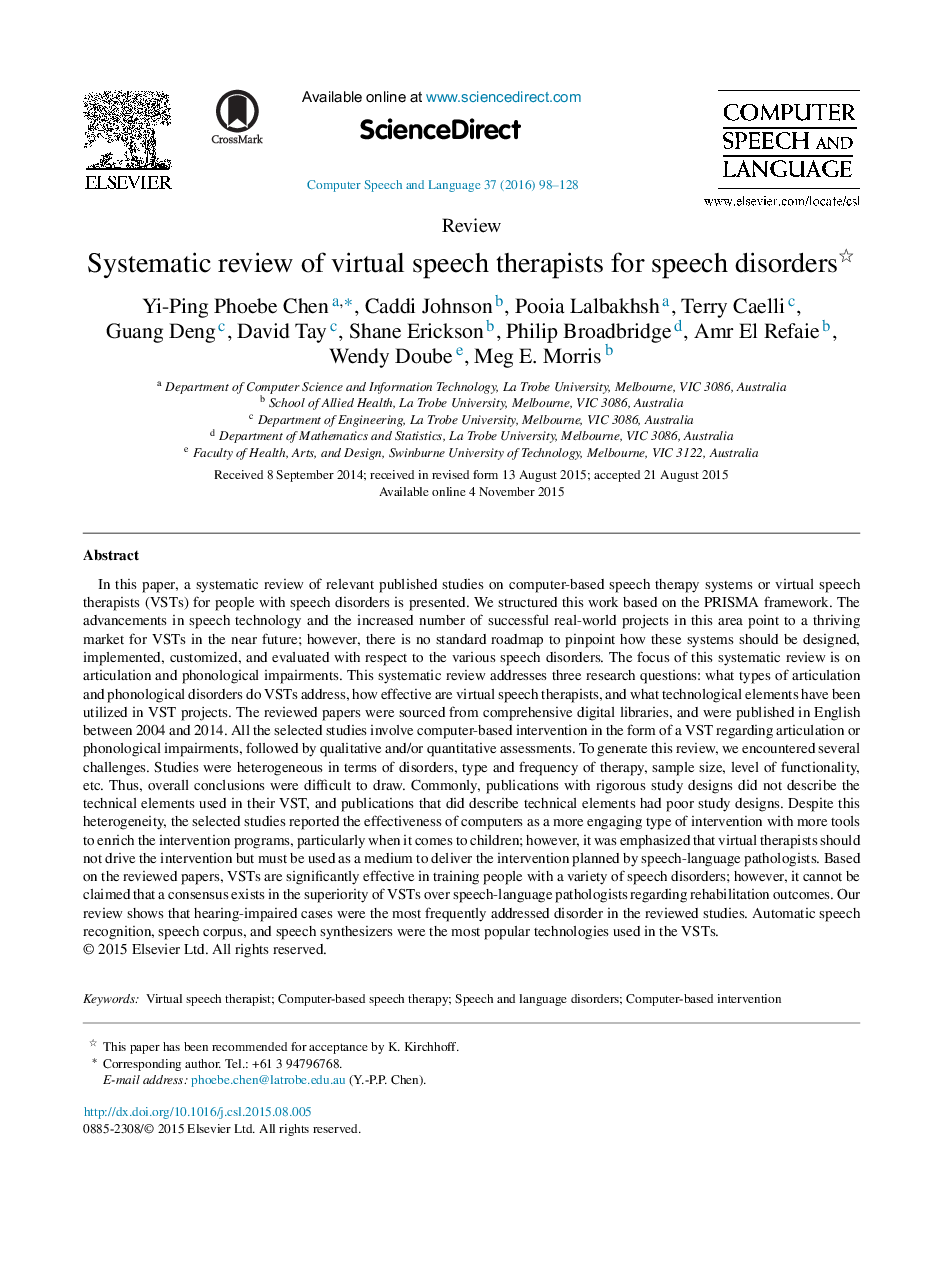| Article ID | Journal | Published Year | Pages | File Type |
|---|---|---|---|---|
| 557732 | Computer Speech & Language | 2016 | 31 Pages |
•A systematic review on virtual speech therapists (VSTs) was presented.•The comparison of VSTs and traditional speech therapy was discussed.•We analyzed intervention methods used in VSTs such as articulation therapy.•Hearing impairments was observed as the most frequent disorder targeted by VSTs.•We explored 3D virtual heads and games as efficient therapy delivery approaches.
In this paper, a systematic review of relevant published studies on computer-based speech therapy systems or virtual speech therapists (VSTs) for people with speech disorders is presented. We structured this work based on the PRISMA framework. The advancements in speech technology and the increased number of successful real-world projects in this area point to a thriving market for VSTs in the near future; however, there is no standard roadmap to pinpoint how these systems should be designed, implemented, customized, and evaluated with respect to the various speech disorders. The focus of this systematic review is on articulation and phonological impairments. This systematic review addresses three research questions: what types of articulation and phonological disorders do VSTs address, how effective are virtual speech therapists, and what technological elements have been utilized in VST projects. The reviewed papers were sourced from comprehensive digital libraries, and were published in English between 2004 and 2014. All the selected studies involve computer-based intervention in the form of a VST regarding articulation or phonological impairments, followed by qualitative and/or quantitative assessments. To generate this review, we encountered several challenges. Studies were heterogeneous in terms of disorders, type and frequency of therapy, sample size, level of functionality, etc. Thus, overall conclusions were difficult to draw. Commonly, publications with rigorous study designs did not describe the technical elements used in their VST, and publications that did describe technical elements had poor study designs. Despite this heterogeneity, the selected studies reported the effectiveness of computers as a more engaging type of intervention with more tools to enrich the intervention programs, particularly when it comes to children; however, it was emphasized that virtual therapists should not drive the intervention but must be used as a medium to deliver the intervention planned by speech-language pathologists. Based on the reviewed papers, VSTs are significantly effective in training people with a variety of speech disorders; however, it cannot be claimed that a consensus exists in the superiority of VSTs over speech-language pathologists regarding rehabilitation outcomes. Our review shows that hearing-impaired cases were the most frequently addressed disorder in the reviewed studies. Automatic speech recognition, speech corpus, and speech synthesizers were the most popular technologies used in the VSTs.
